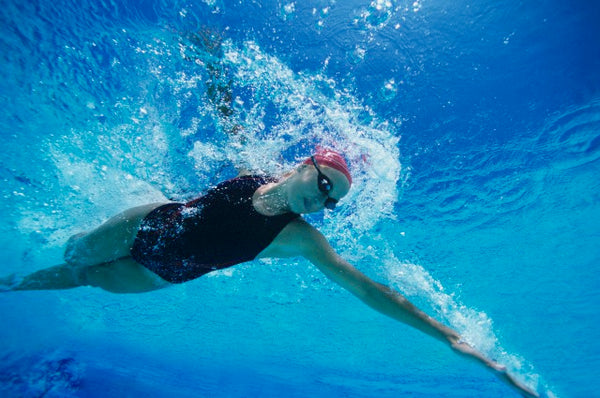In the pool, fewer strokes is better. Your goal should be a high DPS—swim-speak for "distance per stroke." Elite swimmers like Phelps can easily traverse a 25-yard pool in seven strokes (each hand entry counts as a stroke). Try to keep yours below 20 by conserving momentum. Pull yourself over your anchor and continue to glide forward with one arm forward and the other back. "You'll travel farther and faster with your legs streamlined near your axis," says Laughlin. When you begin to slow, start the next stroke.
"If you're a good kicker, you're a good swimmer," says Phelps. The secret is turning your feet into fins. Here again, leverage rules: Your legs should be taut, scissoring you through the water, while your feet remain flexible. This will help them snap at the downstroke of each kick, adding oomph and helping twist your torso along the central axis.
Don't Waste Your Breath
Gasping for air every time your head nears the surface is a great way to drown. Instead, make each breath count. Emphatically exhale the air from your lungs (all of it, not just 90 percent) before snagging a quick, full breath on the high side. Beginning swimmers need to breathe after each stroke, but as your endurance improves, try breathing on alternate sides—that is, after three strokes. It'll reduce the strain on your neck and shoulders that results from always breathing on the same side.
Buy professional swimwear & equipment online at The Beach Company
We feature brands that include Arena, Tribord & Finis.


0 comments